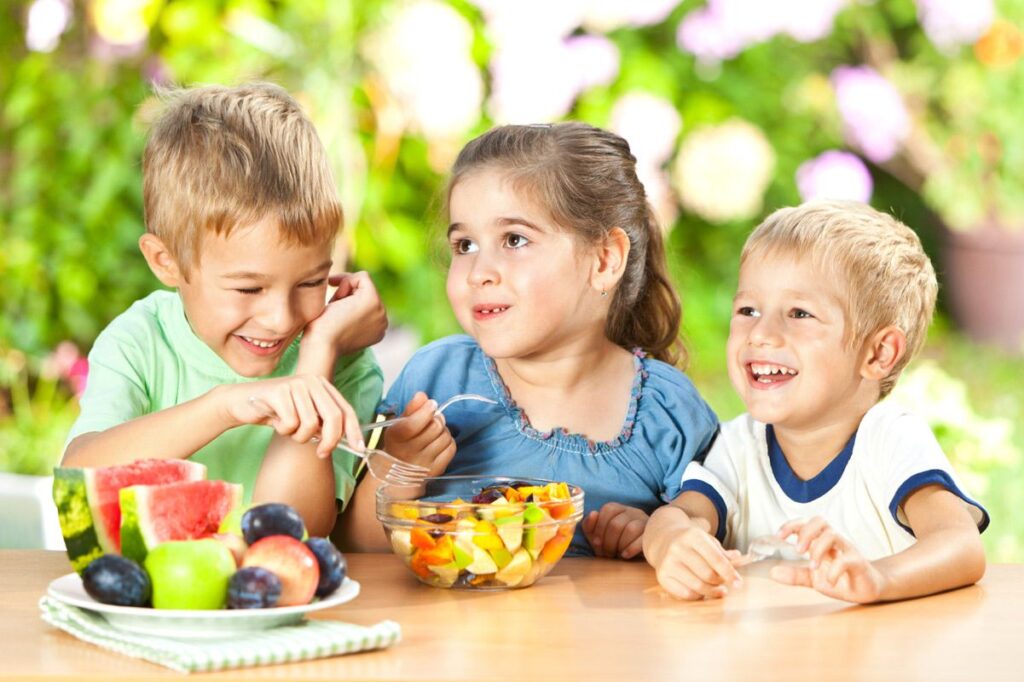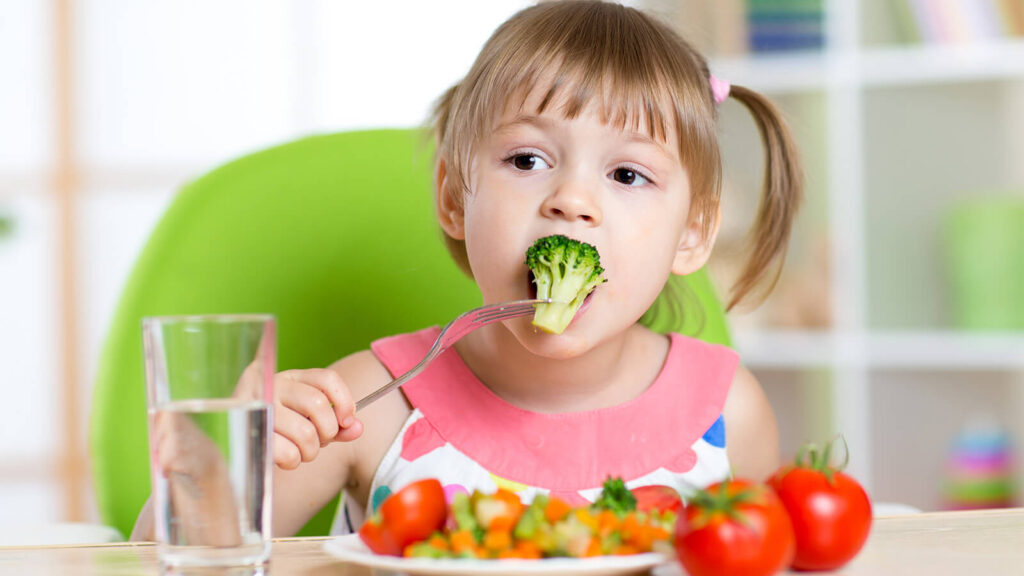When it comes to raising healthy, happy children, nutrition plays a foundational role. The eating habits kids develop in their early years often shape their relationship with food for the rest of their lives. That’s why it’s so important to teach children how to nourish their bodies—not just with rules or restrictions, but with knowledge, consistency, and encouragement.

Good nutrition isn’t just about eating vegetables (though that’s part of it). It’s about creating a balanced lifestyle that includes whole foods, positive food experiences, and routines that promote long-term well-being.
In this comprehensive guide, we’ll explore how to build healthy eating habits for kids, why it matters, and actionable strategies that parents, caregivers, and educators can use to set children up for a lifetime of wellness.
1. Why Nutrition in Childhood Is So Important
Children are in a period of rapid growth and development. From building strong bones and muscles to supporting brain development and emotional health, proper nutrition is essential.
A well-balanced diet in childhood can:
- Support physical growth and immune health
- Boost cognitive development and concentration
- Reduce risk of chronic diseases later in life
- Create positive eating habits and attitudes toward food
Poor nutrition, on the other hand, can lead to:
- Obesity or being underweight
- Fatigue and poor energy levels
- Mood swings and behavioral issues
- Increased risk of diabetes, heart disease, and poor academic performance
The goal isn’t perfection—it’s progress and consistency.
2. The Core Components of a Healthy Diet for Kids
A balanced diet for children should include the following key components:
🥦 Fruits and Vegetables
Packed with vitamins, minerals, antioxidants, and fiber—these should make up a large portion of a child’s plate.
🍞 Whole Grains
Think brown rice, oats, quinoa, and whole wheat bread. These provide energy, fiber, and essential B-vitamins.
🍗 Lean Proteins
Critical for growth and repair. Include eggs, chicken, beans, tofu, fish, and lentils.
🧀 Dairy or Dairy Alternatives
Provide calcium and vitamin D for strong bones. Options include milk, yogurt, cheese, or fortified plant-based alternatives.
🥑 Healthy Fats
Essential for brain development. Choose avocado, nuts, seeds, olive oil, and fatty fish like salmon.
💧 Water
The best drink choice. Limit sugary beverages and encourage water throughout the day.
Balanced meals = better energy, mood, and health outcomes.
3. The Role of Parents and Caregivers
Children learn most of their eating habits from their environment. That’s why parental modeling is one of the most powerful tools in building healthy nutrition habits.
What you can do:
- Model healthy eating by choosing nutritious meals yourself.
- Eat together as a family—it encourages better food choices and communication.
- Avoid labeling foods as “bad” or “off-limits.” Instead, teach moderation and balance.
- Encourage new foods without forcing or bribing.
Make healthy eating fun, not forced.
4. How to Handle Picky Eaters (Without the Mealtime Battles)
If you have a picky eater at home, you’re not alone. It’s incredibly common, especially in toddlers and preschoolers. The key is patience, persistence, and positivity.
Tips to reduce mealtime stress:
- Offer, don’t force. Keep introducing new foods without pressure.
- Create structure. Serve meals and snacks at consistent times.
- Make food fun. Use colorful plates, fun shapes, or food art.
- Involve your child. Let them help with grocery shopping or meal prep.
- Pair new foods with familiar ones. This increases the chance they’ll try something new.
Avoid using food as a reward or punishment. That creates unhealthy emotional connections with eating.
5. Healthy Snack Ideas for Kids
Snacks can be an important part of a child’s day—especially if they’re active or going through a growth spurt. The goal is to make snacks nutritious and satisfying.
Here are some healthy snack combos:
- Apple slices + almond butter
- Whole grain crackers + cheese
- Carrot sticks + hummus
- Greek yogurt + berries
- Banana + peanut butter
- Homemade trail mix (nuts, seeds, dried fruit, whole grain cereal)
Avoid ultra-processed packaged snacks loaded with sugar, salt, and artificial additives.
6. Making Mealtimes a Positive Experience
How you eat is just as important as what you eat. Creating a positive atmosphere around food encourages children to build a healthy, lifelong relationship with eating.
Tips for better mealtimes:
- Turn off screens and eat together at the table.
- Make conversation and focus on connection.
- Serve family-style meals to let kids choose their portions.
- Praise curiosity (e.g., “I love that you tried something new!”)
- Don’t pressure or bribe kids to clean their plates.
Positive associations = more adventurous eaters and less stress.
7. Teaching Kids About Nutrition (In Fun and Age-Appropriate Ways)
Kids are naturally curious—and that curiosity can be used to spark an interest in nutrition.
Try these ideas:
- Read children’s books about healthy foods
- Play games (like “name a fruit for every letter of the alphabet”)
- Do kitchen science experiments (like sprouting beans)
- Start a small garden or grow herbs in the window
- Use food-based crafts (like making faces on toast or building rainbow salads)
Education through play = engagement and empowerment.
8. Limitations and Moderation: Setting Realistic Boundaries
You don’t need to eliminate every treat or indulgence. It’s more important to teach moderation and balance than to be overly restrictive.
How to create balance:
- Use the 80/20 rule: 80% whole, nutritious foods, 20% fun foods
- Don’t keep sugary or salty snacks as everyday options—but don’t demonize them either
- Teach kids how to listen to hunger and fullness cues
- Encourage mindful eating, even at a young age
Remember: Balance over perfection creates lifelong sustainable habits.
9. How Much Should Kids Be Eating?
Portion sizes vary based on age, activity level, and growth stage. Trust your child’s internal hunger cues and avoid obsessing over measurements.
General guidelines:
- Toddlers (1–3 years): 1/4 to 1/2 of adult portions
- Kids (4–8 years): slightly more, depending on activity level
- Tweens and teens: often eat more due to rapid growth and development
Instead of forcing a “clean plate,” ask your child:
“Are you still hungry, or are you satisfied?”
This helps them develop body awareness and intuitive eating.
10. Meal Planning and Prep Tips for Busy Families
Making healthy eating work for your family’s busy schedule doesn’t have to be overwhelming. A little planning goes a long way.
Time-saving ideas:
- Prep breakfasts and snacks in advance
- Create a weekly meal plan and shop accordingly
- Keep a rotating list of go-to meals that are fast and kid-approved
- Cook in batches and freeze portions
- Use slow cookers or sheet pan meals to simplify dinner
Busy life? Healthy meals are still possible with a bit of strategy.
11. When to Talk to a Pediatrician or Nutritionist
If your child:
- Frequently refuses entire food groups
- Struggles with weight gain or growth
- Shows signs of extreme pickiness or food fear
- Has digestion issues or constant fatigue
…it’s worth consulting with a pediatrician or registered dietitian. Early intervention can help identify allergies, deficiencies, or behavioral issues that impact nutrition.
Professional support = peace of mind and customized care.
Conclusion: Start Small, Stay Consistent, and Lead by Example
Helping your child develop lifelong healthy eating habits isn’t about being perfect—it’s about being present, consistent, and encouraging. Every small step you take—whether it’s cooking a colorful dinner together or making snack time more nutritious—lays the foundation for a healthier future.
Remember, kids don’t just need healthy food—they need positive experiences with food. When you model balance, create structure, and make eating enjoyable, you’re doing more than feeding them. You’re empowering them with the tools to make healthy choices for a lifetime.
Start today. Because the habits they build now can shape the rest of their lives.

